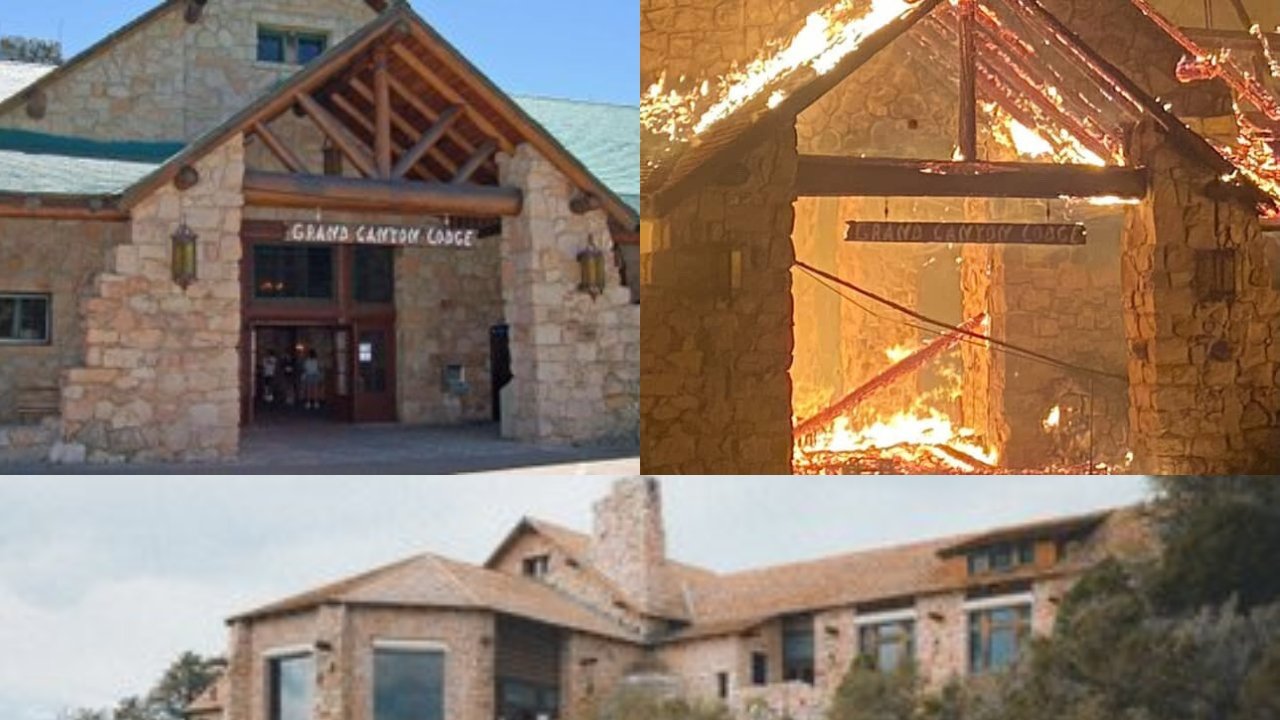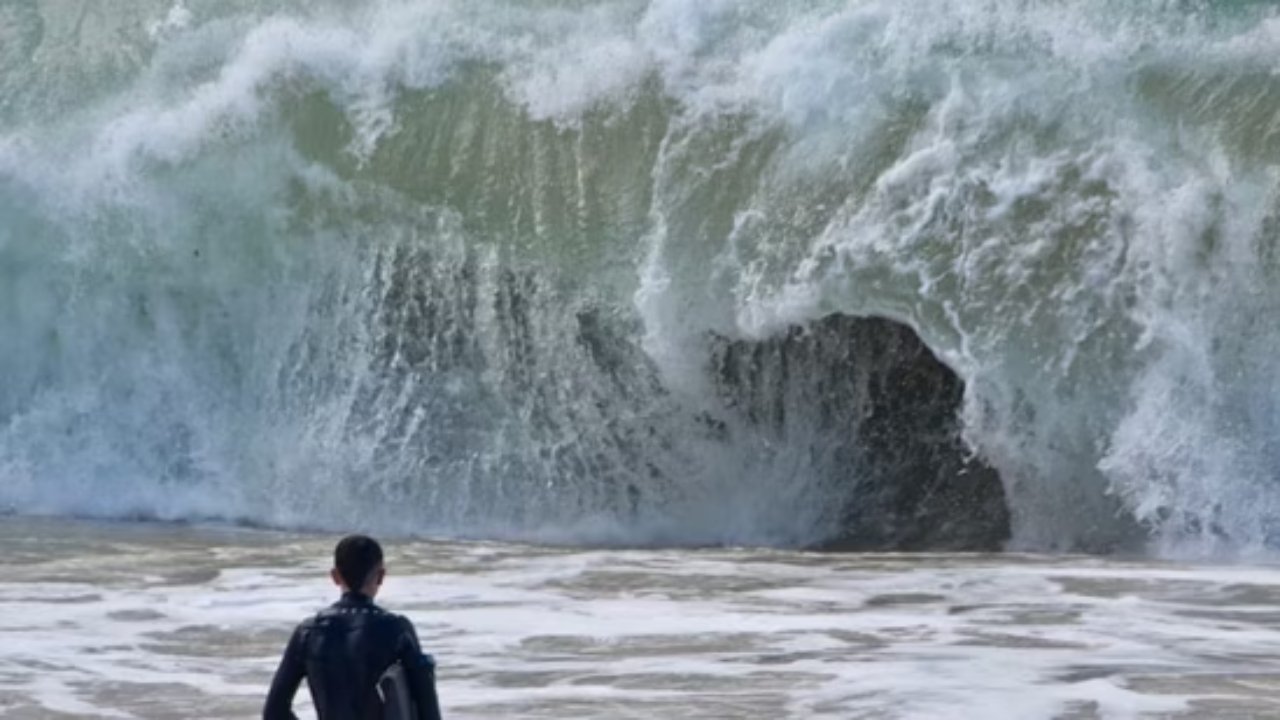Devastating Wildfire Destroys Historic Grand Canyon Lodge, Forces North Rim Closure
Introduction
On July 13, 2025, a catastrophic wildfire known as the Dragon Bravo Fire swept through the North Rim of Grand Canyon National Park, reducing the historic Grand Canyon Lodge—a National Historic Landmark since 1987—to ashes. This iconic structure, the only lodging facility within the park’s North Rim, was among 50 to 80 buildings destroyed in the blaze, marking one of the most devastating events in the park’s recent history. The fire, fueled by extreme weather conditions, has forced the closure of the North Rim for the remainder of the season, leaving park staff, visitors, and Arizona residents reeling from the loss of a cherished cultural and architectural treasure.
The Grand Canyon Lodge: A Historic Gem
The Grand Canyon Lodge, originally constructed in 1928 by the Utah Parks Company (a subsidiary of the Union Pacific Railroad) and designed by architect Gilbert Stanley Underwood, was a masterpiece of rustic architecture. Built with native Kaibab limestone and ponderosa pine, the lodge blended seamlessly with the rugged beauty of the North Rim.
After a kitchen fire destroyed the original structure in 1932, it was rebuilt in 1937 with enhancements, including a steeper roof to withstand heavy snow and an expanded “Sun Room” featuring floor-to-ceiling windows that offered visitors their first breathtaking glimpse of the Grand Canyon. The lodge, with its sloped roof, massive limestone facade, and ponderosa beams, was often the first prominent feature visitors encountered, even before the canyon itself.
Recognized as one of the few remaining complete rustic lodge-and-cabin complexes in America’s national parks, the Grand Canyon Lodge was a symbol of serenity and hospitality. It featured a dining hall, gathering areas, and 91 standard and 23 deluxe cabins, all echoing Underwood’s vision of harmony with the surrounding wilderness. The lodge also housed valuable historical archives and a famous 600-pound bronze statue of a donkey named “Brighty the Burro,” whose fate remains uncertain following the fire.
The Dragon Bravo Fire: A Rapid and Destructive Force
The Dragon Bravo Fire, ignited by a lightning strike on July 4, 2025, initially covered a modest area and was managed as a controlled burn by park officials. However, extreme heat, low humidity, and gusty winds—reaching up to 40 miles per hour—caused the fire to explode on the night of July 12, exhibiting “extreme and volatile fire behavior.”
By Sunday, July 13, the blaze had scorched over 5,000 acres and grown to 7.8 square miles, destroying the Grand Canyon Lodge, the visitor center, a gas station, a wastewater treatment plant, administrative buildings, and numerous historic cabins. A chlorine gas leak from the damaged wastewater treatment plant further complicated firefighting efforts, forcing the evacuation of firefighters and hikers from the area.
The North Rim, which hosts approximately 10% of the park’s nearly five million annual visitors, was evacuated on Thursday, July 10, as the fire surged toward Roaring Springs and Transept Canyons. The nearby White Sage Fire, burning over 40,000 acres near Jacob Lake, has further strained firefighting resources, with both fires remaining at 0% containment as of July 14, 2025. Aerial bucket drops were attempted to slow the fire’s spread near the lodge, but the chlorine gas leak rendered aerial retardant use unfeasible.

Impact on Visitors and Park Operations
The destruction of the Grand Canyon Lodge and surrounding facilities has led to significant disruptions. The North Rim, a seasonal destination known for its quieter, more secluded experience compared to the bustling South Rim, has been closed to the public for the remainder of the 2025 season.
Inner canyon trails, including the North Kaibab Trail, South Kaibab Trail, and Phantom Ranch—a set of cabins and dormitories along the Colorado River—have also been closed, with rafters instructed to bypass the ranch. No injuries have been reported, and the chlorine gas leak does not pose a threat to nearby communities like Marble Canyon or Lees Ferry, though residents may notice a chlorine odor.
The South Rim, which attracts the majority of Grand Canyon visitors, remains open, but the National Park Service (NPS) and Bureau of Land Management are monitoring air quality and urging hikers to avoid the inner canyon for safety. Fire crews are using both ground and air resources to contain the fires, with a fire management team scheduled to take command on Monday, July 14, 2025.
Public and Official Reactions
The loss of the Grand Canyon Lodge has elicited widespread grief. Arizona Governor Katie Hobbs, a native of the state, expressed deep sorrow, stating, “I am incredibly saddened by the destruction of the historic Grand Canyon Lodge, and my heart goes out to every person impacted by the Dragon Bravo Fire near the Grand Canyon’s North Rim.
As someone who was born and raised in Arizona, I know what the Grand Canyon National Park means to so many people, not just in Arizona, but all over the world.” Hobbs has also called for an independent investigation into the federal government’s handling of the fire, questioning why it was initially managed as a controlled burn during Arizona’s driest and hottest season.
Visitors and locals have shared their heartbreak on social media. One Instagram user, commenting on a National Park Service post that garnered nearly 5,000 likes, wrote, “This is a devastating loss for park employees, all of us who’ve had the pleasure of staying here, and everyone who will never get a chance to see it.” Another longtime visitor, Tim Allen from Flagstaff, Arizona, described the lodge as evoking a pioneer spirit, saying, “It just feels like you’re a pioneer when you walk through there.”
Aramark, the company that operated the lodge for the NPS, issued a statement on its website: “We are devastated by the loss of Grand Canyon Lodge and historic buildings on the North Rim.” The Grand Canyon Historical Society’s president, Thomas Sulpizio, expressed concern over the potential loss of valuable archives housed in the lodge, adding to the cultural toll of the fire.
Looking Ahead: Recovery and Reflection
The destruction of the Grand Canyon Lodge marks a significant blow to the park’s heritage and tourism. As firefighting efforts continue, the focus remains on containment and safety. The NPS has not yet announced plans for rebuilding, but the resolve to recover is evident. KAFF News, a local outlet, captured this sentiment: “The Grand Canyon has always challenged our sense of scale and time. In one view, its cliffs and colors tell the story of eons. In another, it can all change in a single night. As the Dragon Bravo Fire continues to burn, it leaves behind both destruction and determination.”
The loss of the lodge, with its panoramic views and rustic elegance, is a reminder of the fragility of even the most enduring landmarks in the face of nature’s unpredictability. As recovery plans develop, the Grand Canyon National Park community and its visitors worldwide mourn the loss of a beloved retreat while looking toward a future where its legacy may be rebuilt. Updates will continue as firefighting efforts progress and the full extent of the damage is assessed.














Post Comment